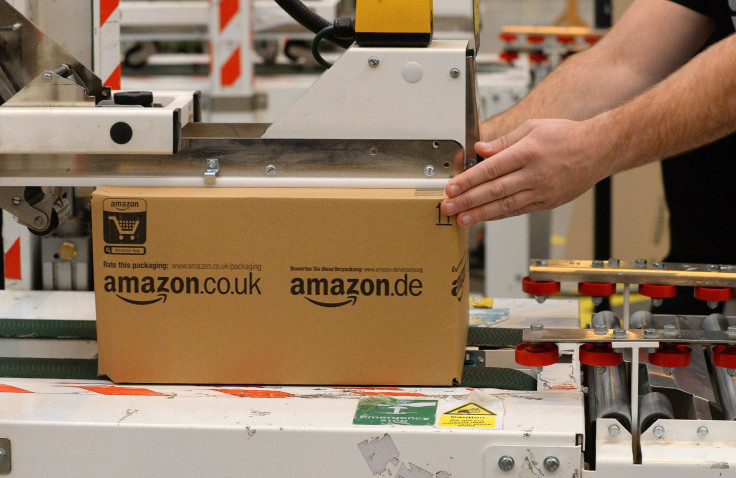Amazon's Getting Aggressive This Holiday Season

The calendar just ticked over to November, which means it's officially holiday shopping season. Amazon (NASDAQ:AMZN) -- already taking the lion's share of online retail sales -- is pushing to set new sales records even as brick-and-mortar competitors, including Walmart (NYSE:WMT) and Target (NYSE:TGT), have quickly grown their digital sales channels.
Both competitors now offer same-day delivery subscriptions -- Delivery Unlimited and Shipt, respectively -- that rival Prime Now benefits through Amazon. Target has been quick to expand its same-day fulfillment options, which now account for more than a third of its online orders. Walmart's success in online grocery has been the driving force behind its strong digital sales growth.
Amazon has taken steps over the last few months in an effort to fight back and continue growing its market share. This holiday season, it's getting extremely aggressive in its effort to win sales from its brick-and-mortar competitors.
Big spending on fulfillment
Amazon has made a few big moves in its effort to fulfill more orders more quickly. About five months ago, it started shipping over 10 million items in the U.S. with one-day shipping for Prime members. It also reduced the price threshold for "add-on items" that used to require the customer to add the item to a larger order to qualify for Prime shipping benefits.
The efforts so far have paid off in accelerating marketplace sales in North America. In fact, the numbers have improved across all of Amazon's reporting metrics around its online marketplace, both when you compare domestic and international metrics and when you look at first-party versus third-party sales.
More recently, Amazon announced it's dropping the $14.99-per-month subscription fee for AmazonFresh, its grocery delivery program. Now, all Prime members will receive unlimited same-day grocery delivery from a wider selection of items wherever AmazonFresh is available. The move appears to be a clear response to the expansions of Walmart's Delivery Unlimited and Target's Shipt.
Of course, all of these efforts add up to significant expenses. Amazon planned to spend $800 million extra on fulfillment in the second quarter to ramp up one-day shipping. It exceeded that number, spent even more in the third quarter, and CFO Brian Olsavsky told investors to expect a $1.5 billion "penalty" for its fulfillment efforts in the fourth quarter.
Beating the competition on price
Consumers perceive Amazon's pricing as more competitive than it actually is a lot of the time. The retailer has moved away from always competing on price to more algorithmic pricing in order to balance margins with sales.
This holiday season, however, the algorithm says to price items lower than competitors. Amazon consistently shows lower prices than everyone else, according to a recent study from Profitero. Walmart's average prices are closest, but still over 4% higher on average. Target's prices are more than 10% higher. On the all-important holiday category of toys, the prices are a little closer. Walmart prices are 1.7% higher, and Target's are within 5%.
Walmart has gotten aggressive on pricing lately, offering to subsidize prices for third-party merchants on its online marketplace. Target, meanwhile, just rolled out a new rewards program, offering all shoppers discounts on future purchases for their shopping trip today, which explains its somewhat higher pricing.
Amazon's pricing ought to fuel further growth in unit sales on top of its one-day and same-day shipping initiatives.
What it all means for investors
The fourth quarter will see Amazon investing a lot in fulfillment and pricing, which means the bottom line will suffer as a result. Indeed, Olsavsky forecast operating profit between $1.2 billion and $2.9 billion for the quarter. That compares to $3.79 billion in Q4 last year. Analysts had been expecting operating profit of $4.19 billion, on average, before Amazon reported earnings last month.
But management believes this is the best move for the business in the long run. "It's a big investment, and it's the right long-term decision for customers," CEO Jeff Bezos wrote in the third-quarter earnings release.
Amazon has run this play several times before, and it's always resulted in in a growing Prime membership base and an increasing share of the e-commerce market. Until the competition shows it can really eat into Amazon's dominance, investors shouldn't worry about the retail giant continuing to act like a growth company and investing for the future.
This article originally appeared in the Motley Fool.
Adam Levy owns shares of Amazon. The Motley Fool owns shares of and recommends Amazon. The Motley Fool has a disclosure policy.




















